-
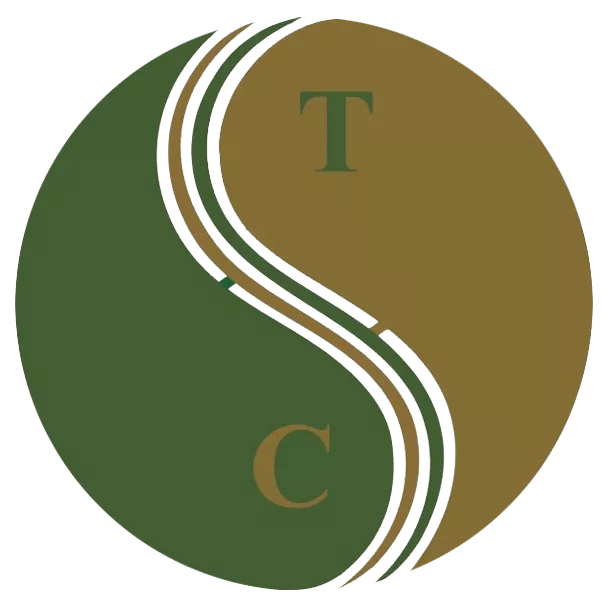 Art of Wellness Acupuncture & Traditional Chinese Medicine (TCM)11704 Wilshire Blvd, Suite 295, Los Angeles, CA, 90025
Art of Wellness Acupuncture & Traditional Chinese Medicine (TCM)11704 Wilshire Blvd, Suite 295, Los Angeles, CA, 90025
myartofwellness@gmail.com310-451-5522 Office Hours
MonClosedTue7:30 am --4 pmWed7:30 am --4 pmThu7:30 am -- 4 pmFri7:30 am -- 4 pmSat7:30 am -- 4 pmSunClosedOur office opens from Tuesdays to Saturdays 7:30 am to 4 pm, will be closed on Memorial day, Independent day, Labor day, Thanksgiving day, Christmas and New year.
-
Recent Posts
- How to Treat Rosacea With Acupuncture and TCM
- How to Treat Perioral Dermatitis With Acupuncture and TCM
- Lymphatic Drainage With Acupuncture and TCM
- How to Treat Turf Toe With Acupuncture
- How to Treat Nerve Pain With Acupuncture and TCM
- How to Treat Watery Eyes With Acupuncture and TCM
- How to Treat Ovarian Cysts With Acupuncture and TCM
- How to Treat Dystonia With Acupuncture and TCM
- Can Acupuncture Help Bad Breath?
- How to Treat Atopy with Acupuncture and TCM
- Plantar Fasciosis Treatment With Acupuncture and TCM
- How to Protect Yourself When Air Quality Is Poor
- How to Treat Spinal Headache With Acupuncture and TCM
- How to Treat Sarcoidosis With Acupuncture and TCM
- How to Treat Flu With Acupuncture and TCM
- Chinese New Year 2025 Year of the Snake
- Sign up to receive news and updates and get my free report:“The Top 10 Reasons to Try Acupuncture”

July 2025 M T W T F S S 1 2 3 4 5 6 7 8 9 10 11 12 13 14 15 16 17 18 19 20 21 22 23 24 25 26 27 28 29 30 31
Acupuncture
How to Treat Perioral Dermatitis With Acupuncture and TCM
By Xiaomei Cai, L.Ac., Ph.D. and Qineng Tan, L.Ac.

Itchy red bumps around mouth, nose, or under eyes? Perioral dermatitis is a common inflammatory skin condition that shows up as a red, bumpy rash on the face. Acupuncture and TCM offers a holistic way to help get rid of perioral dermatitis.
What Is Perioral Dermatitis?
Perioral dermatitis is a type of face rash that primarily affects the area around the mouth (perioral), though it can also show up around the nose (perinasal dermatitis) and eyes (periorbital dermatitis). This condition is most commonly seen in women aged 20–45, but it can affect men and children as well. It’s considered a form of rosacea or a rosacea-like condition by many dermatologists, though it has its own distinct features.
Unlike acne, the red bumps in perioral dermatitis don’t contain pus, and unlike eczema, the rash is not typically scaly or flaky. It often appears suddenly and can be persistent, sometimes lasting for weeks or months.
Traditional Chinese Medicine (TCM), including acupuncture and herbal therapy, offers a natural approach to different types of dermatitis that focuses on healing the skin and addressing underlying imbalances that cause this condition.
Top 5 Symptoms of Perioral Dermatitis
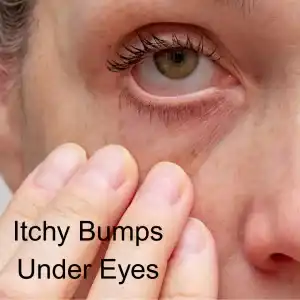
Perioral dermatitis can sometimes be mistaken for other health issues that cause skin rashes or other skin conditions, such as: acne, herpes, rosacea, contact dermatitis, seborrheic dermatitis, discoid lupus, and papula sarcoidoisi. The most common signs of Perioral Dermatitis include:
- Red, inflamed bumps around the mouth, nose, or eyes
- Burning or itching sensation in the affected area
- Dry, tight, or peeling skin
- Clear fluid or pus in some bumps (though usually not like acne)
- Rash that spares the skin directly around the lips (creating a clear border)
Typically, perioral dermatitis will become worse with use of corticosteroid creams or heavy moisturizers.
It is important to recognize this condition, so that it can be treated appropriately.
What Causes Perioral Dermatitis?
The exact cause of perioral dermatitis is not fully understood, but several triggers and contributing factors have been identified. People who already suffer from eczema may be more prone to developing perioral dermatitis, because eczema can affect the skin barrier. Here are some of the things that might trigger an perioral dermatitis outbreak or flare up:
Topical corticosteroid use – This is the most common trigger. Long-term use of steroid creams, even over-the-counter hydrocortisone, can lead to this rash.
Hormonal changes – Many people who menstruate notice flare-ups around their menstrual cycle or during times of hormonal fluctuation.
Use of heavy facial creams or cosmetics – Occlusive skin products may block pores and irritate the skin.
Fluoridated toothpaste – Some people find their symptoms worsen with fluoride-containing toothpaste.
Environmental triggers – Sun exposure, wind, and heat can aggravate the skin.
Microbial imbalance – Overgrowth of certain bacteria or yeast on the skin may play a role.
Stress – Emotional stress can weaken the immune system and disrupt skin balance.
Dietary factors – Some people report flares related to certain foods, like spicy foods or alcohol.
Diagnosis and Treatment for Perioral Dermatitis
In a conventional medical setting, diagnosis is typically made based on a visual exam and patient history. A dermatologist may ask about what kinds of skincare products you use, medications (especially steroid use), and recent lifestyle changes.
Standard treatments include:
Discontinuation of steroid creams – Although this may cause a rebound flare, it is essential to stop steroid use.
Topical antibiotics or anti-inflammatory creams – Such as metronidazole or clindamycin.
Oral antibiotics – Like tetracycline or doxycycline, especially for more stubborn cases.
Skin care guidance – Patients are usually advised to stop all current products and switch to a minimalist routine with gentle cleansers and no makeup.
While these treatments can be effective, they don’t always address the root cause, and relapses are common—especially if underlying imbalances are not corrected.
TCM for Perioral Dermatitis
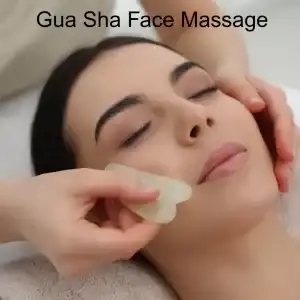
Traditional Chinese Medicine sees perioral dermatitis not just as a skin problem, but as a sign of deeper internal disharmony. In TCM, the health of the skin is closely related to the health of the Lung, Stomach, and Spleen organ systems. When there is heat, dampness, or toxicity trapped in the body, it can manifest as inflammation on the skin.
For example, a rash around the mouth is often related to Stomach Heat or Spleen Dampness, especially if digestion is weak or the diet is rich in spicy or greasy foods. If the rash appears around the nose and cheeks, Lung Heat or Wind-Heat may be contributing factors.
TCM also considers emotional stress and hormonal imbalance as key factors in skin conditions. Emotional stress can create stagnation in the Liver system, while hormonal changes may disrupt the balance of Yin and Yang in the body, leading to heat and inflammation.
Can Acupuncture Help Perioral Dermatitis?
Acupuncture and TCM therapies aim to treat the root cause of perioral dermatitis while also calming the skin and promoting healing.
Acupuncture helps regulate the immune system, reduce inflammation, and rebalance the organ systems involved. Specific acupuncture points may be used to clear heat, drain dampness, and support the Spleen and Lung.
Chinese herbal medicine can be customized to each patient’s individual pattern. Herbal formulas will be customized for each individual, depending on the presentation.
Dietary and lifestyle recommendations are often part of treatment, helping patients avoid inflammatory foods, support digestion, and reduce stress.
Facial gua sha and herbal washes can be used as topical therapies to calm redness, promote lymphatic drainage, and soothe irritated skin.
In many cases, patients find that their rash improves significantly with a few weeks of consistent acupuncture and herbal therapy—without the side effects of antibiotics or topical steroids.
While studies specifically on acupuncture for perioral dermatitis are limited, research shows that acupuncture is effective in treating other inflammatory skin conditions like eczema, acne, and rosacea. These studies demonstrate that acupuncture can reduce inflammation, balance hormones, and modulate the immune system, which are all key factors in healing perioral dermatitis.
A review found that acupuncture reduced itch, redness, and lesion count in patients with atopic dermatitis. Another study noted improvement in acne symptoms with acupuncture and herbal medicine, especially in women with hormonal imbalances.
Acupuncture Near Me for Perioral Dermatitis in West Los Angeles
If you’ve been struggling with persistent or recurring perioral dermatitis and are looking for a more holistic, drug-free way to manage your symptoms, acupuncture and Traditional Chinese Medicine offer a safe and effective alternative. By treating both the surface symptoms and the internal imbalances, we help the skin heal from the inside out.
At Art of Wellness Acupuncture, we specialize in treating chronic skin conditions like perioral dermatitis using the principles of Traditional Chinese Medicine. Every treatment is tailored to your unique constitution and lifestyle, so you can heal naturally and prevent future flare-ups. If you’re dealing with red, itchy bumps around your mouth or face, don’t wait—reach out today to schedule your consultation and get started on the path to clearer, calmer skin.
*This article is for education from the perspective of Traditional Chinese Medicine only. The education provided by this article is not approved by FDA to diagnose, prevent, treat and cure human diseases. It should not stop you from consulting with your physician for your medical conditions. Traditional Chinese Medicine is based on Qi, which is an invisible force that usually cannot be observed by modern science. Because science focuses on testing ideas about the natural world with evidence obtained through observation, these aspects of acupuncture can’t be studied by science. Therefore acupuncture and Chinese herbs are often not supported by double-blind, randomized trials, and they are considered alternative medicine therapies in the United States.
Lymphatic Drainage With Acupuncture and TCM
By Xiaomei Cai, L.Ac., Ph.D. and Qineng Tan, L.Ac., Ph.D.
Persistent swelling in your arms, legs, or other areas of your body? This could be a sign of lymphedema, a condition caused by the buildup of lymphatic fluid. Acupuncture and Traditional Chinese Medicine (TCM) offer a gentle and effective way to promote lymphatic drainage and support the body’s natural detoxification process.
What Is Lymphedema?
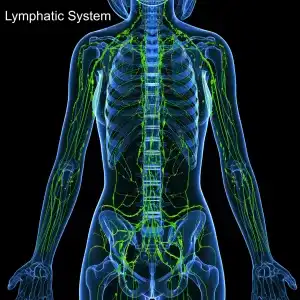
The lymphatic system is a complex network of nodes, tubes and ducts that move lymph fluid through the body, carrying immune cells (like T cells, B cells, and NK cells) that fight against bacteria, viruses, cancer cells, and damaged cells.
Lymphedema is a chronic condition that occurs when the lymphatic system is unable to properly drain lymph fluid, leading to fluid retention and tissue swelling. When the system is blocked or damaged, lymph can accumulate in the tissues, causing swelling and discomfort.
Top 10 Symptoms of Lymphedema
Signs of lymphedema, or lymphatic edema, can develop slowly over time or come on quite suddenly. At first, you may notice that a part of your body is a little swollen, or that your arm or leg just seems a little bit more swollen and stiff than the other one. Your clothes might seem a little bit tighter.
You might notice that you can’t see veins in your limbs, when you used to be able to. Your joints just may seem stiff. It can be easy to attribute mild symptoms of lymphedema to hot weather, general inflammation, or simply aging.
As lymphedema progresses to more severe stages, you may begin to notice that the affected areas are always stiff and swollen, firm to the touch, and that the skin in those areas is becoming noticeably thicker.
Common symptoms of lymphedema include:
- Swelling in the arms, legs, fingers, toes, face, or trunk
- A feeling of heaviness or tightness in the affected area, restricted range of motion
- Aching or discomfort in the swollen limb
- Recurring infections in the affected area
- Hardening or thickening of the skin (fibrosis), redness, itchy skin, rosacea
Symptoms of lymphedema may worsen over time if they are not addressed. Acupuncture and TCM offer a holistic way to treat lymphedema and manage the underlying conditions that cause swelling.
Common Causes of Lymphedema
There can be many different factors that lead to a buildup of lymphatic fluid. A few of the most common causes of lymphatic edema include:
- Surgical removal of lymph nodes (commonly due to cancer treatment)
- Radiation therapy that damages lymph vessels or nodes
- Infections that cause inflammation and blockage of lymphatic vessels
- Cancer that spreads to or blocks lymph nodes
- Injury or trauma to the lymphatic system
- Congenital malformations or underdeveloped lymphatic vessels (primary lymphedema)
- Obesity and sedentary lifestyle that impair lymph flow
Treatment for Lymphedema
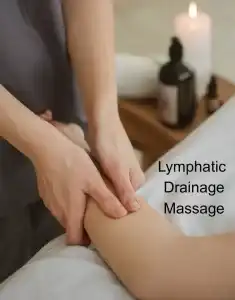
Conventional treatment for lymphedema typically focuses on symptom management and improving quality of life. This may include a recommendation to wear compression garments like sleeves or stockings to encourage lymph flow. Manual lymphatic drainage (MLD): A specialized massage technique performed by trained therapists to move lymph fluid manually.
Gentle, regular physical activity may be recommended to help stimulate lymphatic circulation.
Machines known as Pneumatic compression devices, such as inflatable sleeves worn on the limbs, can mimic manual drainage.
In some cases, procedures to remove excess tissue or improve drainage pathways.
While these methods can help manage the symptoms, they often need to be maintained consistently and may not address the underlying systemic imbalances.
TCM View of Lymphedema
In Traditional Chinese Medicine, lymphedema is viewed as a disruption of the body’s natural flow of Qi (vital energy) and fluids. According to TCM theory, the spleen plays a central role in fluid metabolism. When the spleen Qi is weak or deficient, it cannot properly transform and transport fluids, leading to dampness and phlegm accumulation. This internal dampness can settle in the limbs and cause swelling.
Lymphedema may also be related to stagnation of Qi and blood, particularly in the channels (meridians) that traverse the affected area. External factors like trauma, surgery, or radiation can block the flow of Qi and blood, creating what TCM refers to as “blood stasis.”
Key TCM patterns that may contribute to lymphedema include:
- Spleen Qi deficiency
- Damp accumulation
- Qi stagnation
- Blood stasis
Can Acupuncture Help With Lymphatic Drainage?
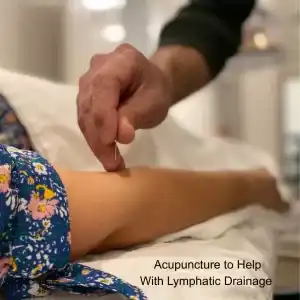
Acupuncture helps to regulate the flow of Qi and blood through the meridians. When specific points are stimulated, they can promote circulation and encourage the movement of stagnant fluids.
Herbal medicine and acupuncture treatments can strengthen the spleen’s function of fluid transformation and transport. Strengthening the kidneys also helps resolve chronic dampness and supports the body’s ability to detoxify.
Research has shown that acupuncture has anti-inflammatory and analgesic effects. For patients experiencing pain, heaviness, and aching due to lymphedema, acupuncture can provide relief.
A healthy lymphatic system is essential for immune function. Acupuncture has been found to modulate immune activity and may help reduce the frequency of infections associated with lymphedema.
Gentle massage techniques like Tui Na and Gua Sha can be applied along the meridians to manually stimulate lymphatic drainage. Unlike deep tissue massage, these methods work with the body’s energy system to promote gentle, effective movement of fluids without overwhelming the tissues.
One study of women who had breast cancer related lymphedema found that twice weekly acupuncture sessions over the course of four weeks helped reduce swelling in their arms.
A review of studies on acupuncture treatment for cancer patients showed that acupuncture not only helped with lymphatic swelling, but also helped to relieve anxiety and depression, nausea and vomiting, and chemotherapy induced neuropathy.
Acupuncture Near Me for Lymphatic Drainage in West Los Angeles
Lymphedema can be a chronic and frustrating condition, but there are holistic options that go beyond symptom management. Acupuncture and TCM offer time-tested methods to support lymphatic drainage, strengthen the body’s natural detox systems, and relieve discomfort. If you’re living with lymphedema or chronic swelling, reach out to us at Art of Wellness Acupuncture in West Los Angeles. We’d be happy to create a personalized treatment plan to help you feel lighter, more comfortable, and more energized again.
*This article is for education from the perspective of Traditional Chinese Medicine only. The education provided by this article is not approved by FDA to diagnose, prevent, treat and cure human diseases. It should not stop you from consulting with your physician for your medical conditions. Traditional Chinese Medicine is based on Qi, which is an invisible force that usually cannot be observed by modern science. Because science focuses on testing ideas about the natural world with evidence obtained through observation, these aspects of acupuncture can’t be studied by science. Therefore acupuncture and Chinese herbs are often not supported by double-blind, randomized trials, and they are considered alternative medicine therapies in the United States.
How to Treat Dystonia With Acupuncture and TCM
By Qineng Tan, L.Ac., Ph.D and Xiaomei Cai, L.Ac., Ph.D.
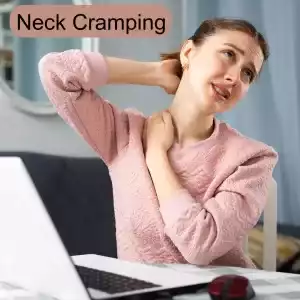
Writer’s cramp? Foot cramps and spasms in your calf muscles? Cramps that cause your toes to curl up or big toe to stick up? These are signs of dystonia, a disorder that causes muscles to contract, causing painful spasms and uncontrollable twisting of body parts. Acupuncture can help relieve symptoms of dystonia and reduce cramping.
Dystonia is a movement disorder that can affect one part of the body, such as the hand, or several parts of the body, causing painful cramping and involuntary muscle contractions.
Dystonia most often affects the hands, feet, and neck (cervical dystonia or neck dystonia). When the cramping only happens in one area, this is known as focal dystonia, i.e. focal dystonia hand, or focal hand dystonia.
Acupuncture can help relieve symptoms of dystonia without injections or surgery.
Top 5 Kinds of Dystonia
Dystonia muscle cramping and spasming can happen in various parts of the body, including:
- Neck (Cervical Dystonia) – spasm pulls the head to one side forward or backward.
- Hand – usually triggered by a certain activity, like writing, playing an instrument, or playing golf.
- Jaw – (Oromandibular Dystonia) – causes trouble with chewing, swallowing or drooling, can happen concurrently with cervical dystonia.
- Eyelids (Blepharospasm) – spasms cause the eyelids to close, can also feel like dry eyes, sensitivity to light. Can be triggered by light, screens, and stress.
- Vocal Cords (Laryngeal Dystonia) – strained voice, only able to speak in a whisper.
For some people, dystonia does not cause pain, while for others, it can become increasingly painful. In some cases, dystonia may plateau; in others, it gets progressively more severe.
Over time, some types of dystonia can lead to the deterioration of joints and arthritis.
What Causes Dystonia?
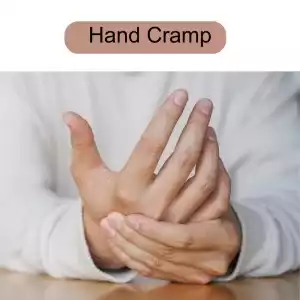
Medical science is not entirely clear on the specific causes of dystonia. There may be some genetic predisposition for dystonia. Some types of dystonia show up without any seeming correlation to other issues (primary dystonia). Other kinds of dystonia manifest as symptoms of another disorder affecting the nervous system.
Muscle spasms can be a symptom of several different disorders, including:
- Huntington’s disease
- Parkinson’s disease
- Stroke
- Brain injury or brain tumor
- Encephalitis
- Tuberculosis
- Carbon monoxide poisoning or heavy metal poisoning
Some types of dystonia can be brought on by a specific physical activity. Mental, emotional, and physical stress can also trigger an episode of dystonia cramping.
Some studies have suggested that there is a problem with motor programming, or a deficiency in the motor cortical network of the nervous system.
Treatment for Dystonia
The most common form of treatment for focal dystonia, such as the kind that causes “writer’s cramp,” is botulinum neurotoxin (BNT or Botox) injections. This is a localized treatment that helps relieve symptoms by blocking the release of chemicals involved in muscular contractions.
Patients feel their muscles relax within a few days or a week. The results of this treatment typically only last for a few months, and then another injection is needed.
Deep brain stimulation (DBS) is a surgical method used to treat dystonia. This involves the implantation of a stimulator that is somewhat like a pacemaker; it is controlled remotely and stimulates parts of the brain that affect muscular contractions.
Acupuncture can be a good alternative treatment modality for reducing the muscle spasms associated with dystonia.
Can Acupuncture Help Dystonia?
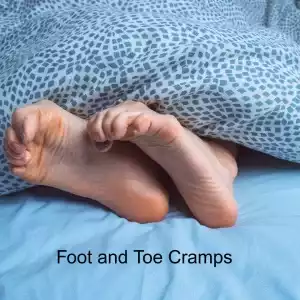
TCM theory views most health issues as being related to internal or external pathogenic forces causing imbalance within the organ systems. Organ systems in TCM are interrelated in ways that may seem counterintuitive from the “Western medicine” point of view. For example, in TCM, the actions of the muscles and tendons are related to the liver system.
Pathogenic forces like wind, damp, and heat can arise or attack the organ systems and cause problems. In the case of dystonia, excess wind in the liver affects the tendons and muscles, causing them to be overactivated.
In some cases, dystonia is triggered by emotional stress. If a patient is experiencing anxiety or depression, then that is also a factor that needs to be addressed.
Thus, the acupuncturist will create a treatment protocol designed to use different TCM modalities to address the root cause of the problem and the symptoms. Acupuncture to treat dystonia will address the liver wind and also be used to help relax the muscles. Treatment can also focus on relieving stress and balancing the person’s emotional state.
Acupuncture treatment is often used to help stimulate muscle tone. In cases of dystonia, we will use acupoints on the meridians related to the affected muscles as a way of both suppressing muscle tone and activating it. Some of the muscles related to the area that is cramping up might be hypertonic (tight and rigid), while others might be hypotonic (not active or offering resistance).
One study that looked at acupuncture treatment for cervical dystonia used electromyogram to measure muscle activity, and it showed that shallow placement of acupuncture needles decreased excess activity in the muscles.
Another study looked at patients who had been receiving Botox treatment for their cervical dystonia. They then received a series of 6 sessions of acupuncture treatment. All of the patients reported improvement and two-thirds of the patients intended to continue acupuncture treatments for management of their condition.
Gua sha and other forms of Chinese massage can also be used to help with dystonia.
Moxibustion or moxa, which is a warming herb that is burned near the affected area, can also be helpful to relieve cramping.
Acupuncture Near Me for Dystonia
Dystonia can be a serious disruption to your daily life and activities, making you feel out of control in your body. In some cases, dystonia causes serious pain. If you have been experiencing severe muscle cramping in specific areas, please do not hesitate to reach out to us at Art of Wellness for help. Drs. Tan and Cai have over 35 years of experience helping to treat conditions of all kinds that affect the nervous system and cause musculoskeletal problems.
*This article is for education from the perspective of Traditional Chinese Medicine only. The education provided by this article is not approved by FDA to diagnose, prevent, treat and cure human diseases. It should not stop you from consulting with your physician for your medical conditions. Traditional Chinese Medicine is based on Qi, which is an invisible force that usually cannot be observed by modern science. Because science focuses on testing ideas about the natural world with evidence obtained through observation, these aspects of acupuncture can’t be studied by science. Therefore acupuncture and Chinese herbs are often not supported by double-blind, randomized trials, and they are considered alternative medicine therapies in the United States.
How to Treat Atopy with Acupuncture and TCM
By Xiaomei Cai, L.Ac., Ph.D and Qineng Tan, L.Ac, Ph.D.
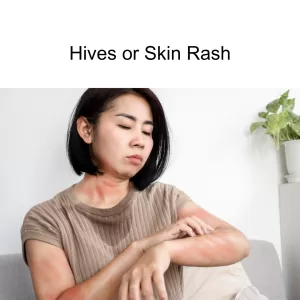
Do you suffer from more than one kind of allergy? Asthma, food allergies, eczema, hives, hay fever? “Atopy” is the tendency to have several different kinds of allergic reactions, or conditions such as atopic dermatitis. Acupuncture and TCM can help relieve allergy symptoms and itchy rash.
What Is Atopy?
The term “atopy” refers to a collection of allergic conditions that a person might experience all together. Atopic disorders include asthma, allergic dermatitis or eczema (red, inflamed, itchy skin), frequent urticaria or hives, and allergic reactions to foods and environmental allergens.
If you frequently experience allergy symptoms, like itchy eyes, skin rashes, and shortness of breath, then you may have atopy.
Atopy is known to be related to a heightened immune response that occurs because of Immunoglobulin (IgE) antibodies. Atopic dermatitis, in particular, is associated with higher than usual levels of IgE.
IgE antibodies are proteins produced by the immune system. They help fight off infection and react when a person is exposed to allergens, like certain foods (i.e. dairy, wheat, nuts), insect venom, ragweed and other plants that trigger hay fever symptoms, and some medications.
When IgE is produced and interacts with receptors in the body, it triggers allergic reactions, such as inflammation that constricts the airways (asthma), makes skin turn red and itchy (eczema, dermatitis, hives), produces excess mucus (runny nose, allergic rhinitis), or sudden drop in blood pressure (anaphylaxis).
People with atopy can sometimes have up to ten times the usual amount of IgE in their bloodstream. IgE levels can also be elevated in people with autoimmune conditions like rheumatoid arthritis (RA), psoriasis, and lupus.
Is Atopy an Autoimmune Disease?
While atopy, and atopic dermatitis or atopic eczema, are related to the immune system, and are considered to be associated with autoimmune disorders, such as Crohn’s disease, Celiac disease, alopecia areata, and ulcerative colitis, atopy itself is not currently categorized as an autoimmune condition.
Treatment for Atopy

Typical medical treatment for atopy involves prescription corticosteroid creams and antihistamines to control the body’s exaggerated immune response.
Prolonged use of corticosteroids can lead to many unwanted side effects, including weight gain, swelling, high blood pressure, elevated blood sugar levels, loss of bone mass, mood swings, and increased risk of infections.
Reliance on antihistamines can cause side effects, too, including drowsiness, blurred vision, dry mouth, problems with urination, and liver problems.
Acupuncture and TCM offer a holistic way to help relieve allergic conditions, including atopic disorders, without the toxic side effects of pharmaceutical drugs.
Can Acupuncture Help Atopy?
Treatment of allergies with TCM goes back thousands of years. Centuries of observation, study, and treatment with acupuncture and herbal formulas have led to the development of treatment regimens that can help address both patterns of allergy symptoms and the underlying systemic imbalances that cause them.
One of the most prominent concepts in TCM theory is that of Yin and Yang, two opposing yet complementary forces. When Yin and Yang are balanced within the body, systems work harmoniously. When Yin and Yang are out of balance, disease occurs.
According to TCM theory, allergic diseases arise due to imbalances in Yin and Yang that contribute to either an exaggerated response from the immune system, or a suppression of the immune response. This concept is roughly analogous to what science has shown about pro-inflammatory cytokines and anti-inflammatory cytokines.
In TCM, we see people’s health as being very much influenced by their environment, emotions, nutrition, stress, etc. We also acknowledge that each person is born with certain attributes of their constitution, or foundational health. People who are prone to allergies have inherited certain physiological conditions that make them more susceptible to these problems. However, this might show up differently in different individuals, depending on deficiencies within their organ systems.
For example, one person may have Qi deficiency in the lungs, which will translate into allergic reactions that affect the respiratory system and skin, while another may have deficiency in the stomach or spleen, which can lead to damp-heat conditions that cause eczema. Liver deficiency can lead to “wind” conditions like hives, and so on.
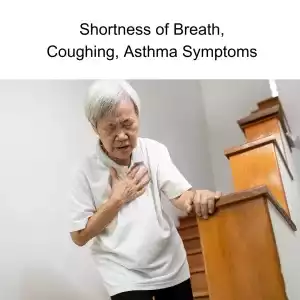
Therefore, the aim in using TCM to treat atopy is to address the overall balance of yin and yang and also to address more specific deficiencies in the organ systems. Acupuncture and herbs can also strengthen the constitution and the immune system, so that a person is better able to fight off external pathogens.
Every person experiences atopy in their own unique way, depending on their symptoms. Acupuncture treatment and other TCM modalities, especially herbal medicine, can be personalized for each individual patient.
Acupuncture can be very effective for relieving the uncomfortable symptoms triggered by atopic conditions. For example, studies have shown that acupuncture treatment can help reduce the intensity of chronic itching due to dermatitis.
A review of 14 studies on TCM to treat atopic eczema concluded that patient who received acupuncture treatment experienced less severe symptoms, compared with patients who were given antihistamines.
Acupuncture Near Me for Atopy in West Los Angeles
Drs. Tan and Cai at Art of Wellness Acupuncture in Los Angeles have over 35 years of experience helping patients who are suffering from allergic conditions. Acupuncture and herbs can help relieve itchy rashes, respiratory symptoms, food sensitivities, and other immune issues. Please do not hesitate to come in for consultation, to see if we can help you find relief from a multitude of uncomfortable symptoms of atopic dermatitis, hives, and other allergic reactions.
*This article is for education from the perspective of Traditional Chinese Medicine only. The education provided by this article is not approved by FDA to diagnose, prevent, treat and cure human diseases. It should not stop you from consulting with your physician for your medical conditions. Traditional Chinese Medicine is based on Qi, which is an invisible force that usually cannot be observed by modern science. Because science focuses on testing ideas about the natural world with evidence obtained through observation, these aspects of acupuncture can’t be studied by science. Therefore acupuncture and Chinese herbs are often not supported by double-blind, randomized trials, and they are considered alternative medicine therapies in the United States.
Plantar Fasciosis Treatment With Acupuncture and TCM
By Qineng Tan, L.Ac., Ph.D. and Xiaomei Cai, L.Ac., Ph.D.

Foot arch pain? Ache in the bottom of the foot or heel? This condition has commonly been known as plantar fasciitis, but now more practitioners are calling it “plantar fasciosis.” Acupuncture treatment can help relieve arch and foot pain and get you walking comfortably again.
What Is Plantar Fasciosis?
The plantar fascia ligament connects the heel bone to the toes, spanning the whole bottom of the foot. It absorbs shock every time your foot touches the ground, as you walk.
When this band of connective tissue starts to cause you pain, it’s usually due to overuse, overstretching, or wearing shoes that don’t give you enough support and cushioning.
This condition, which is the most common cause of heel pain and pain in the bottom of the foot, has been called “plantar fasciitis” for some time, because it was believed to be caused by inflammation in the connective tissue. The suffix “-itis” means “inflammation,” as in “tendinitis,” “pancreatitis,” and many other health conditions that are related to inflamed tissues.
If the bottom of the foot shows signs of swelling, warmth, and redness, then it is probably related to inflammation.
However, many cases of plantar fascia pain are not caused by inflammation. Sometimes, arch pain is due to a degenerative condition, in which the tissues are breaking down. Microtears in the connective tissues, or cell death, because of lack of blood flow, are often the real problems causing the pain.
Symptoms of Plantar Fasciosis
Arch and foot pain when you first get up in the morning is one of the most common signs of plantar fasciitis or plantar fasciosis. This pain can be sharp and stabbing, or more of a dull ache.
Often, walking or exercise makes the foot feel better for a while, but then, after you sit down and rest, and then get back up, the pain flares up again.
The signs that you may have damage in your plantar fascia include:
- Pain in the heel of your foot
- Sore foot arch or foot arch tenderness
- Stiffness in the foot
- Tight Achilles tendon
- Swelling around the heel
Why Does the Bottom of My Foot Hurt?
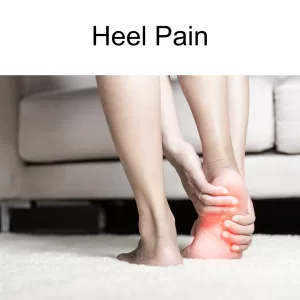
Lots of activities can cause damage to the sensitive connective tissue in the bottom of your foot. Some of the causes of plantar fasciosis include:
- Standing for long periods of time
- Working out, dancing, or just walking on a hard surface (like a concrete floor or sidewalk)
- Exercising without stretching or warming up your feet and leg muscles
- Wearing shoes with little support, like sandals or flat sneakers
- Walking around barefoot a lot (even at home)
You might be more susceptible if your arches are very high, or if your feet don’t have much of an arch at all. You may also be at higher risk for foot pain if you are carrying a lot of extra weight.
Conditions like rheumatoid arthritis or psoriatic arthritis can also contribute to the development of plantar fasciosis.
Plantar Fasciosis Treatment
Typically, a doctor does not even need to perform any special diagnostic testing to conclude that a person is experiencing plantar fasciitis, or “heel spur syndrome.”
A treatment protocol typically includes some stretching exercises, the use of orthotics, OTC pain medications, and possibly corticosteroid injections.
Rest and patience, and a gradual increase of physical activity are usually recommended.
Acupuncture treatment can help by relieving pain and helping to promote healing in the damaged tissues.
Can Acupuncture Help Plantar Fasciosis/Plantar Fasciitis?
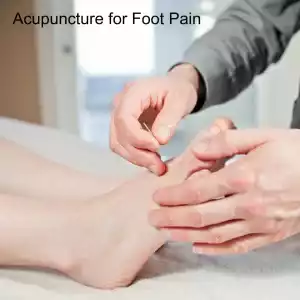
TCM takes a holistic approach to treating pain conditions and sports injuries. From the TCM perspective, trauma to the plantar fascia area can lead to stagnation and deficiency in the flow of Qi and blood.
Acupuncture, Tuina massage, and gua sha are all TCM modalities that can help improve blood flow and promote healing.
Pain sensations stem from injury and damage to bodily tissues, but the pain signals themselves are controlled by the central nervous system and brain activity. Acupuncture has been shown to have effects that can calm down this signalling, which can alter how a person experiences feelings of pain.
Medical science is still conducting research to understand how it is that acupuncture treatment works effectively to reduce and relieve pain.
The action and “excitability” of neurons in the hypothalamus are related to pain sensations. It has been suggested that acupuncture treatment may help to change the excitability of the neurons, thus changing the perception of pain.
It has also been suggested that pain in the plantar fascia is related to the activation of trigger points in the muscles of the foot. Electro-acupuncture can help “deactivate” these trigger points to relieve pain.
Acupuncture needling may affect nerve endings in the local area that release vasoactive neuropeptides, which play a key role in blood flow to an area and the release of hormones. It may also reduce electrical activity, or the “twitch” response in muscle tissues.
Acupuncture can also increase the levels of endorphins, serotonin, and noradrenaline released by the body’s own pain relief system, and help to decrease the number of pain signals that are being sent through the central nervous system.
One study compared patients who were given exercises to help with their plantar fasciopathy versus patients who did the exercises and were given acupuncture treatment. The exercise-only group experienced an overall 21% reduction of their pain scores, while the acupuncture group reported a greater than 50% reduction in pain right after the treatments.
How to Help Plantar Fasciosis Pain
Here are a few important tip for how to help heal and prevent foot pain from coming back.
- Wear shoes with a wide toe box and flat heels (not high heels). Be sure to replace your shoes as needed; the cushioning foam in shoes breaks down, even if you haven’t been wearing them often.
- Wearing toe spacers that help create more space around your toes can help by reducing the constriction of blood vessels and getting more blood flow to your whole foot.
- A warm foot bath every night before bedtime, especially with Chinese herbs or Epsom salt, is very helpful for circulation, which is essential for healing damaged connective tissue.
- Warm up properly before your workout, and vary your workouts, so that you are not just engaging in the same repetitive actions every time you exercise.
- Avoid running and walking on concrete surfaces, and avoid exercising outdoors when it is damp, rainy, and cold.
Acupuncture Near Me for Plantar Fasciosis in West Los Angeles
Plantar fasciosis pain can get in the way of your daily exercise routine and make walking painful for months, if you don’t take proper care of it. The right combination of gentle exercise, acupuncture treatment, herbs and nutrition can help you get back to walking normally without pain more quickly. If you are feeling that pain in the bottom of your foot every morning when you get out of bed, please consider coming and seeing Dr. Tan or Dr. Cai to help relieve heel pain.
*This article is for education from the perspective of Traditional Chinese Medicine only. The education provided by this article is not approved by FDA to diagnose, prevent, treat and cure human diseases. It should not stop you from consulting with your physician for your medical conditions. Traditional Chinese Medicine is based on Qi, which is an invisible force that usually cannot be observed by modern science. Because science focuses on testing ideas about the natural world with evidence obtained through observation, these aspects of acupuncture can’t be studied by science. Therefore acupuncture and Chinese herbs are often not supported by double-blind, randomized trials, and they are considered alternative medicine therapies in the United States.